How to Use Valuation Signals to Navigate This Market Cycle for Maximum Upside
2024.10.14 03:13
This week I summarize and share some key concepts around how to use valuation signals to navigate market cycles — something that should be useful for both beginners and seasoned professionals to reflect on especially as we move further through the current market cycle.
1. Simple Cycles: You often see valuations cited in financial media — referring to a variety of different metrics and assertions around the market being over or undervalued. But when it comes to the stock market as a whole the reason we care about valuations is the information it tells about the stage of the market cycle (are valuations generally higher or lower than usual). The visual below shows the simple version of how the cycle works and how valuation extremes can help managing risk and capturing upside through the cycle. But of course, it’s never that simple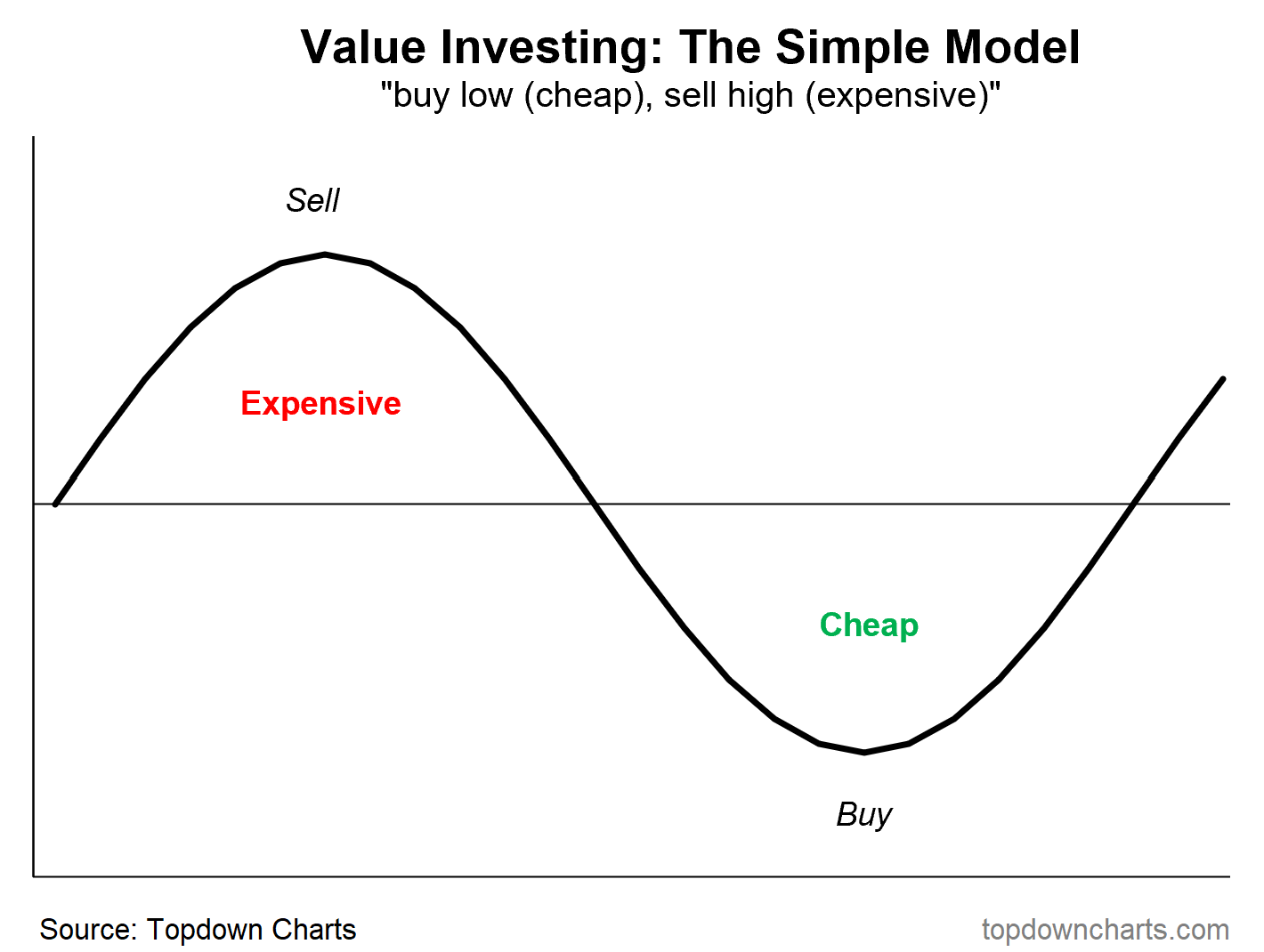
Source: Using Valuations to Navigate the Cycle
2. How it Really Works: In the face of complexity you have to start with a simple framework to build clarity on what it is you are trying to do and distill the basic concepts. But the below chart provides a bit more of a nuanced perspective on how cycles work in the real world. Extreme expensive (risky: time to sell, reduce exposure, manage risk) vs Extremely cheap (opportunity: time to buy, build exposure, capture upside) are two distinct but often short-lived and relatively rare (time-wise) parts of the cycle. It’s obvious (on paper) what to do then, but in the intervening periods where valuations are rising/falling, you get less information, less signal, and more confusion.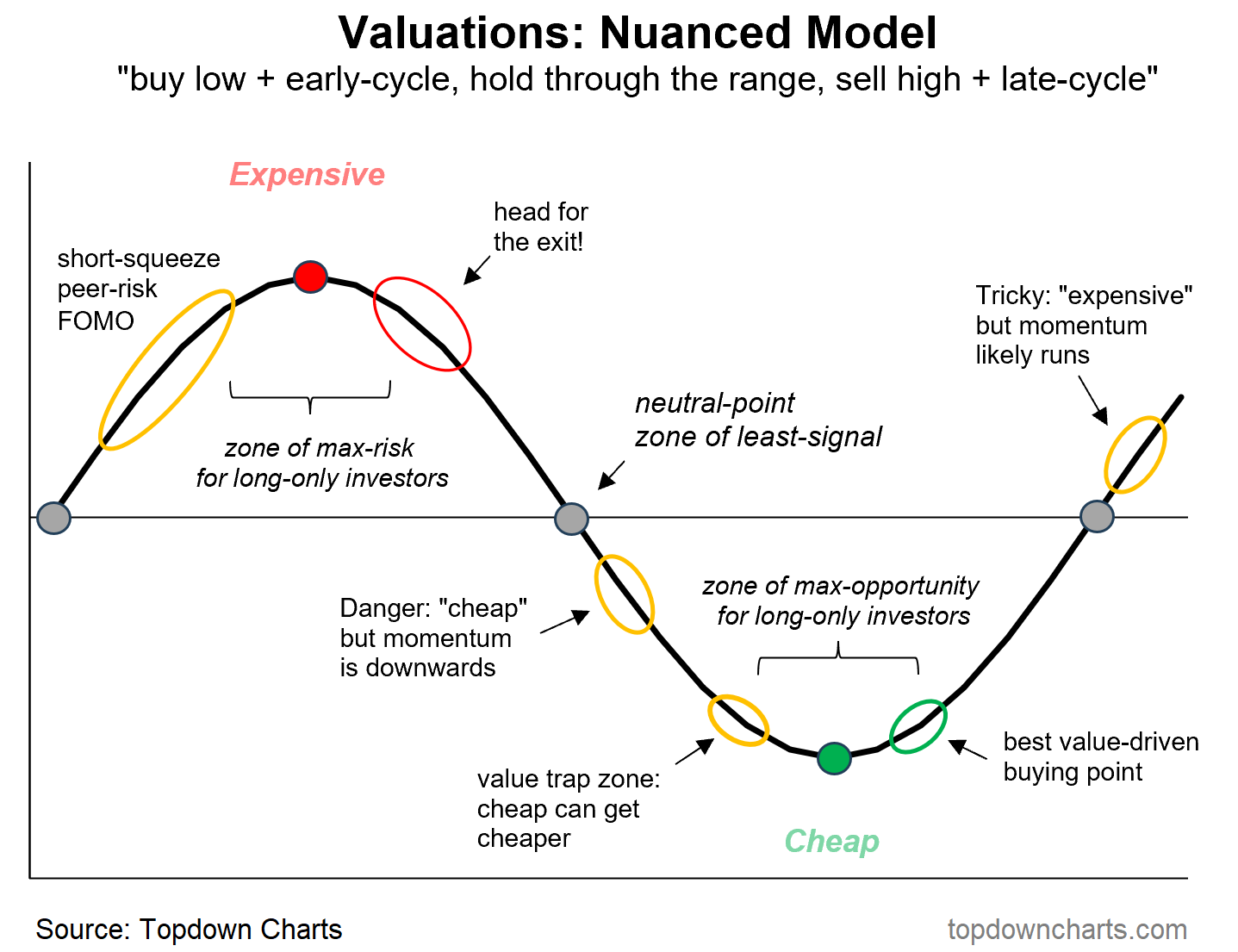
Source (further reading): Using Valuations to Navigate the Cycle
3. Refined Model of Cycles and Valuations: To reconcile it you have to think pragmatically — e.g. being valuation driven at extremes vs momentum driven through the range. Indeed, the best signals from valuations come when valuations reach extreme expensive and then momentum turns down (sell); or when valuations reach extremely cheap and then momentum turns up (buy).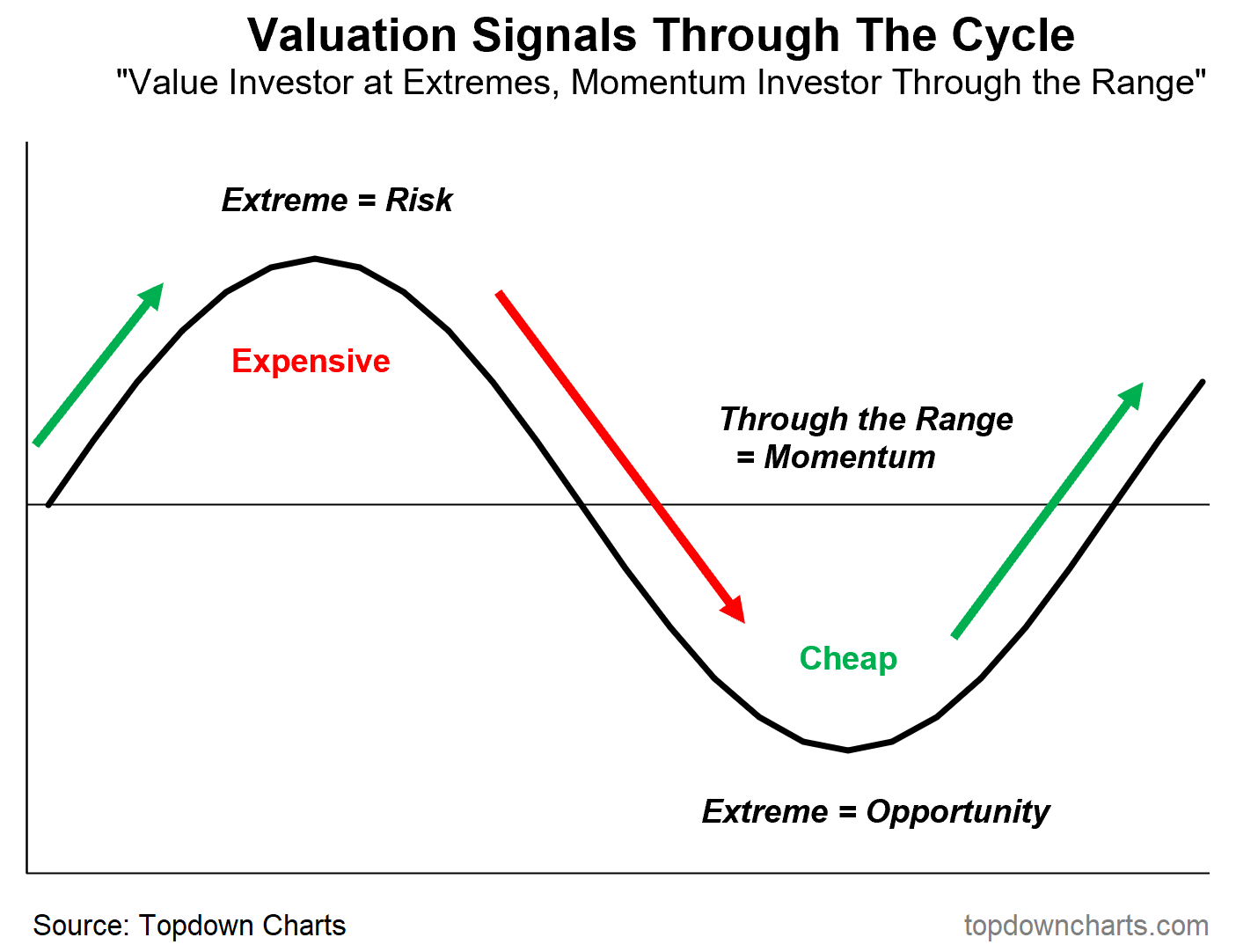
Source: How to Use Value Signals for Global Equities
4. How the Data Tracks: I ran the numbers for the US stock market and here’s what each end of the cycle looks like for traditional valuation-extreme peaks/troughs. One point of interest is the frequency (8 peaks, 12 troughs over a 114-year period) — valuation extreme driven market peaks and troughs are relatively rare but can of course be major opportunities to add value by either maximizing upside capture (from troughs) and/or protecting capital (from peaks). The other interesting aspect is the shape it’s not a smooth slow moving gentle transition, it’s more often a sharp climax and sudden reversal.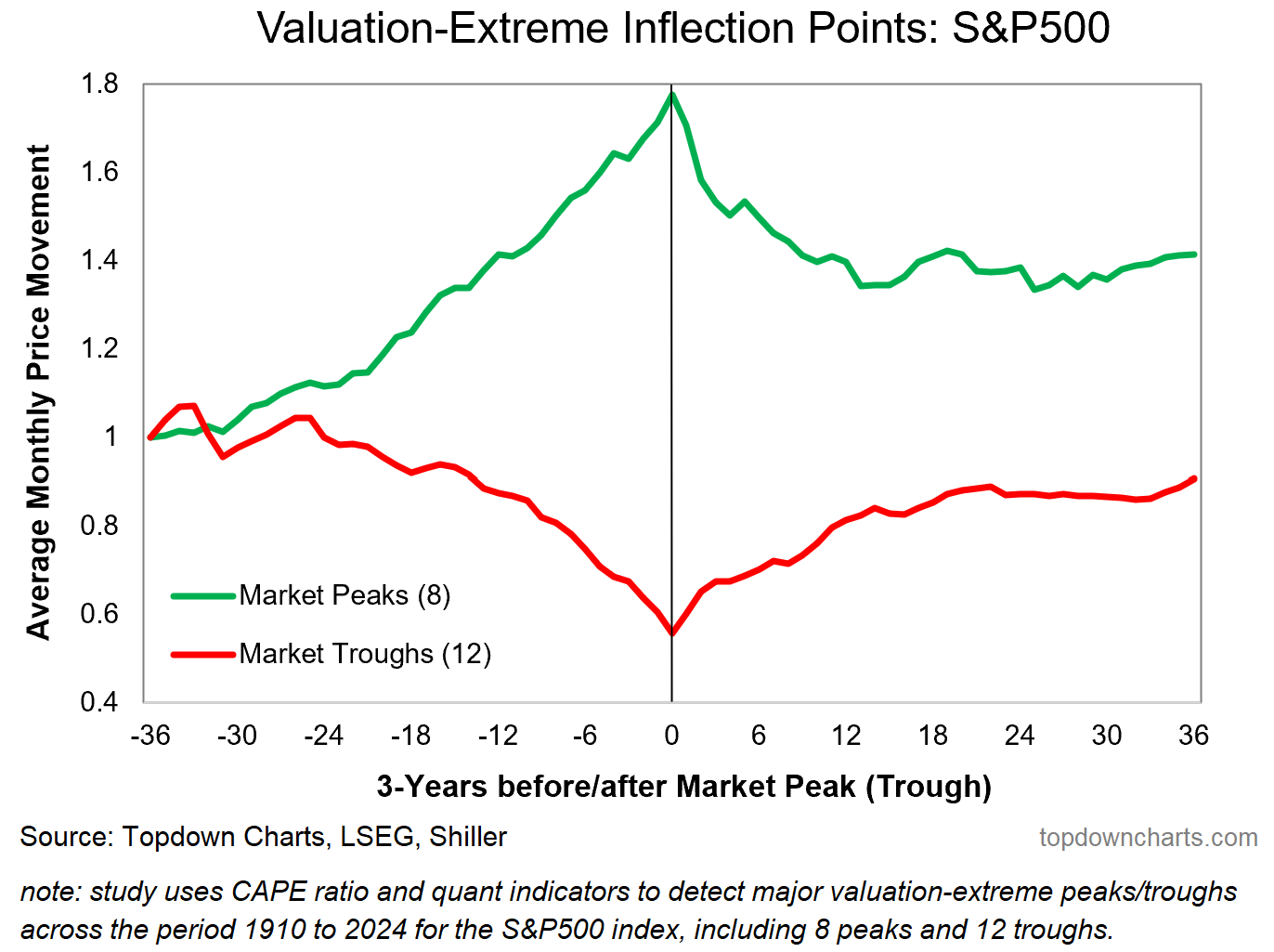
Source: Chart of the Week – Tops and Bottoms at Topdown Charts
5. Different Dimensions of Value: So far I’ve focused on absolute valuations (i.e. is the market expensive vs cheap by itself vs its own history), but the other key dimension to consider (especially for sector/country selection) is relative value (how valuations for one market compared to another). Basically, the best opportunities tend to come when a sector/country is cheap vs history AND cheap vs peers (and vice versa).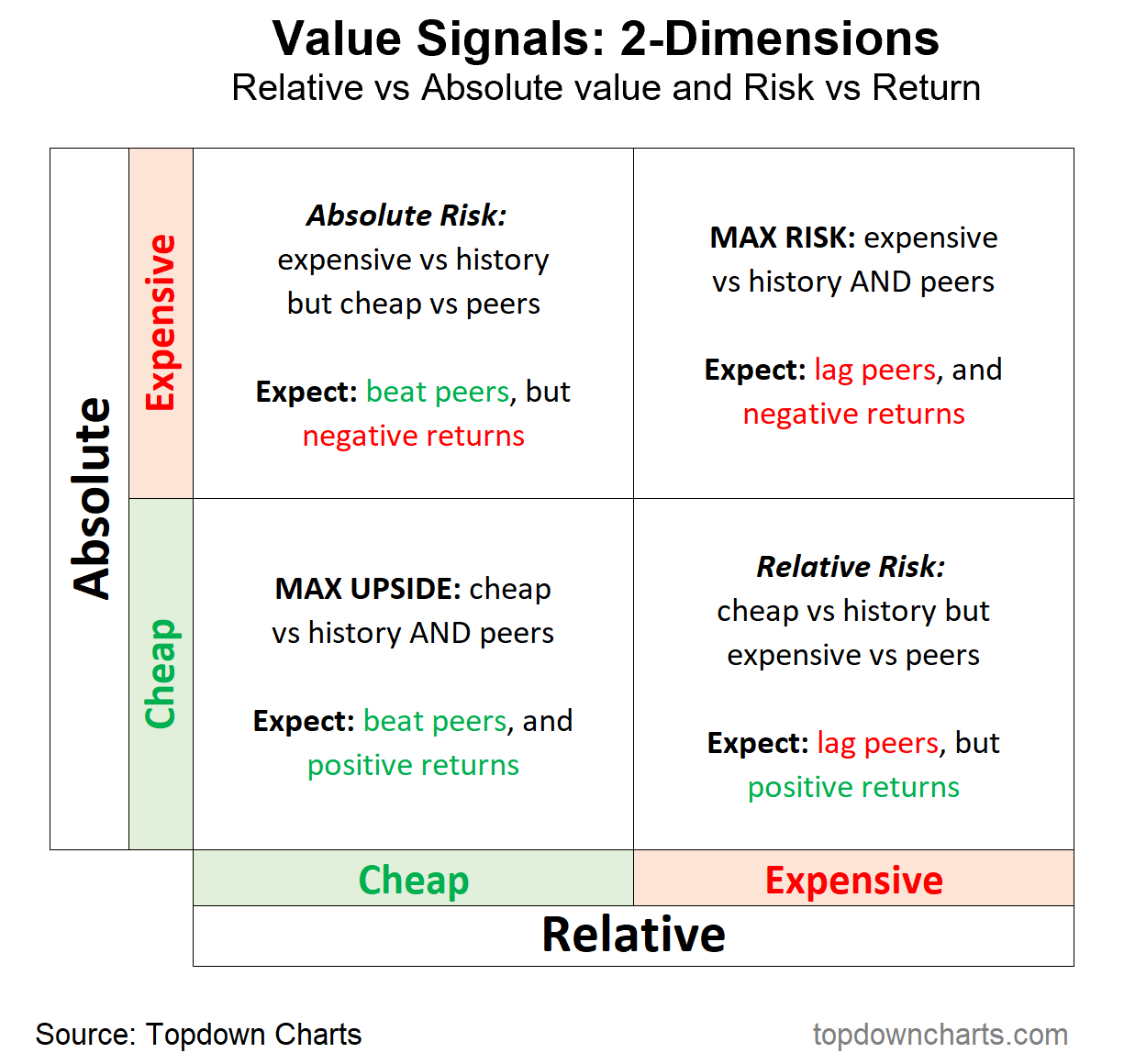
Source (further reading): How to Use Value Signals for Global Equities
6. Asset Allocation Perspectives: Taking it a step further, from an asset allocation perspective you can go deeper and broader and find even more information from (relative) value. For instance, the best opportunity for stocks would be when valuations are cheap vs history, cheap vs other markets (and cheaper than usual), bonds expensive (and therefore equity risk premium likely higher as yields would be low), and defensive/hedging assets expensive (bonds, , defensive sectors).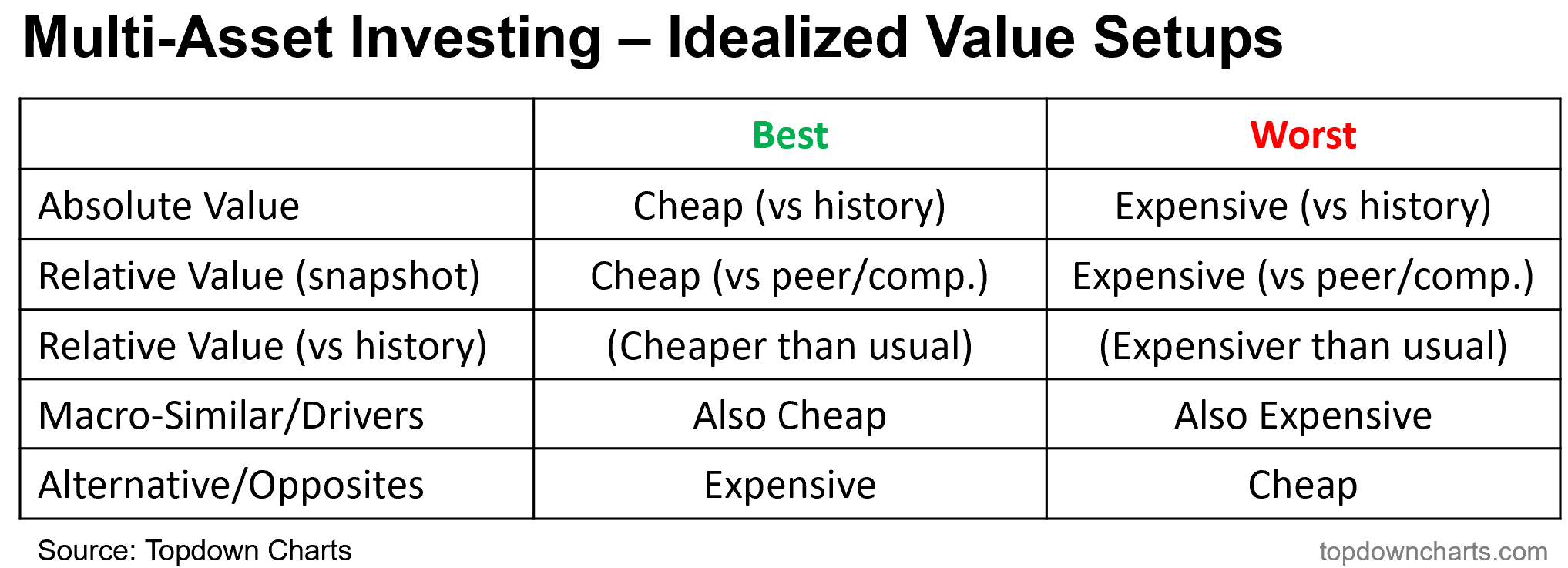
Source (further reading): Valuations for Multi-Asset Investing
7. Thinking Further: To simplify and summarize it, absolute valuations (where the valuations of a specific asset are tracking vs history) tell us about outright risk vs opportunity, while relative valuations tell us about relative risk vs opportunity. The overlap of ranking absolute valuations also tells us about risk vs opportunity across assets and markets and helps prioritize research efforts (where to take a closer look) and portfolio allocations (adding cheap diversifiers vs fat-pitches).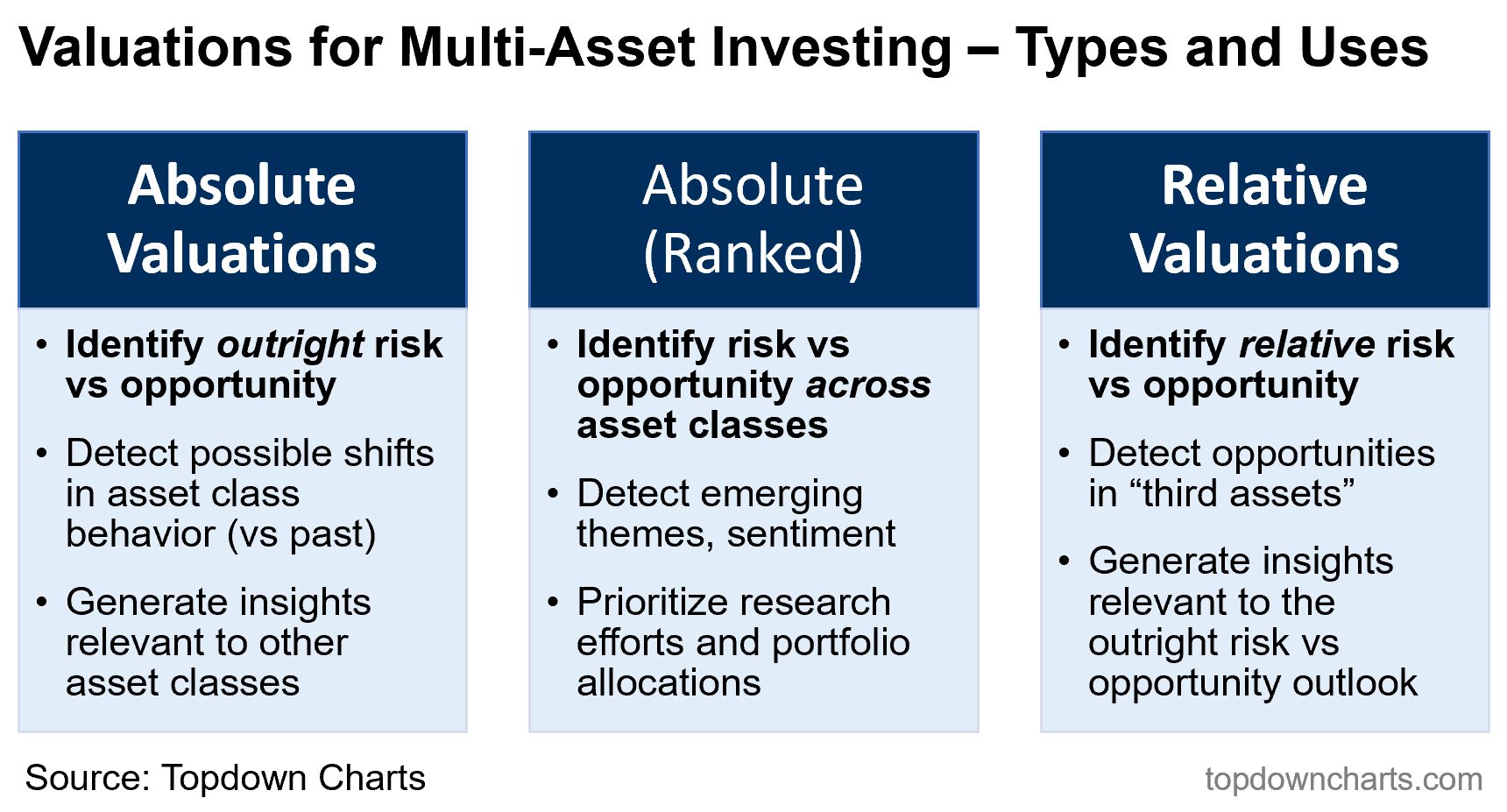
Source (further reading): Valuations for Multi-Asset Investing
8. What about Other Assets? The notion of cheap vs expensive is easy to understand when it comes to stocks, but other asset classes and markets also go through cycles and also reach extremes at either end (which can be identified using valuation indicators). So ultimately it’s just a matter of designing the right indicators to help navigate cycles and risk vs opportunity across asset classes.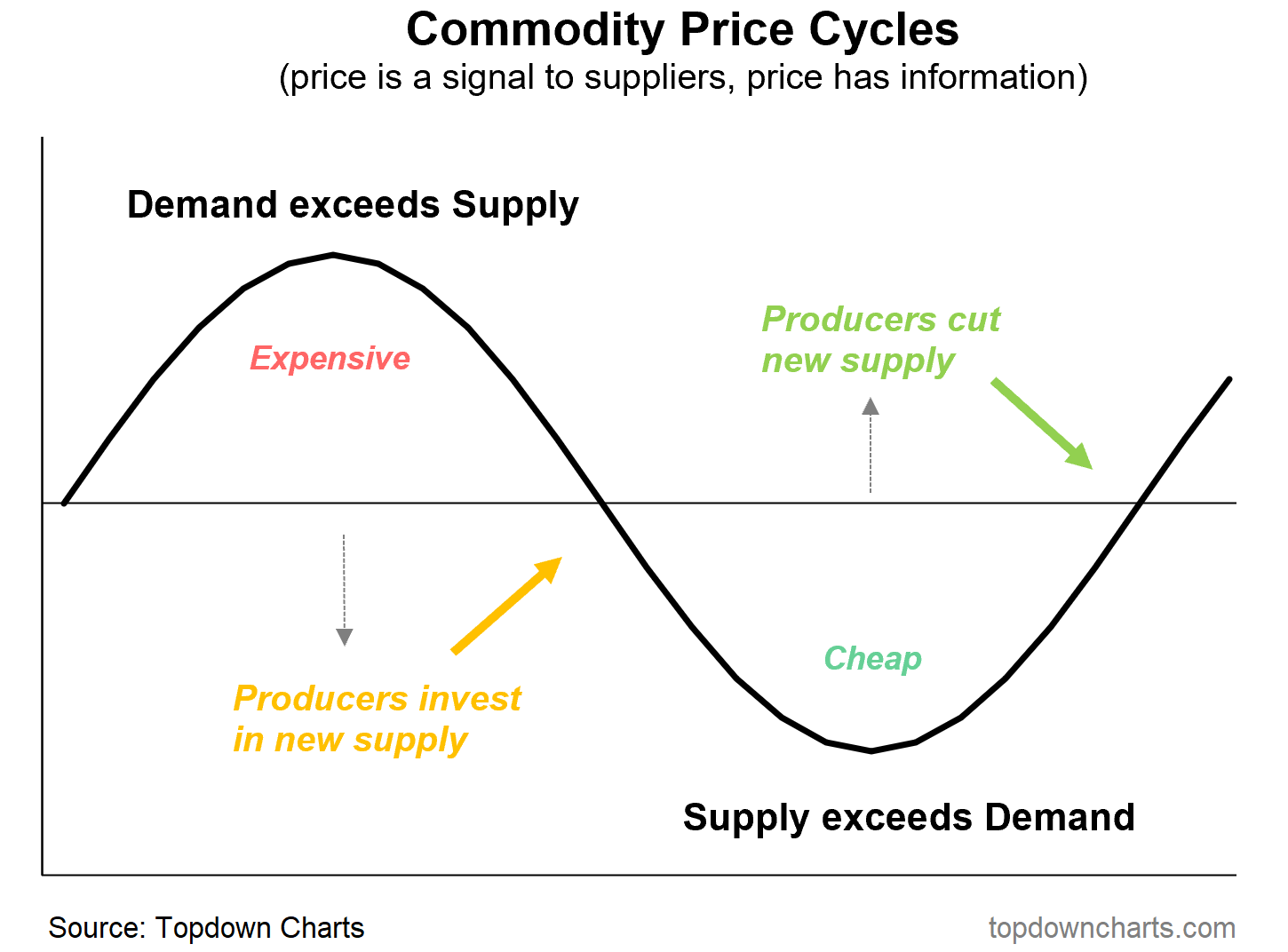
Source: Detecting Opportunities in Commodities
9. Designing Indicators: When it comes to indicator design (i.e. a quantitative signal that tells you what stage of the cycle you are at), these are the main things I think about — Explainable (it works for a logical reason and you can explain why it works), Reliable (it works across time and gives a consistent signal, doesn’t just break when you need it the most), Sensible (does it actually tell you to do the right thing at the right time?). Data mining will find indicators that seem to work well but lack an element of “why does it work?” (and may break), overthinking will produce indicators that might make conceptual sense but don’t actually give a useful usable signal (and are hence a waste of time). Coming up with the right set of indicators is just as important as forming the right conceptual frameworks.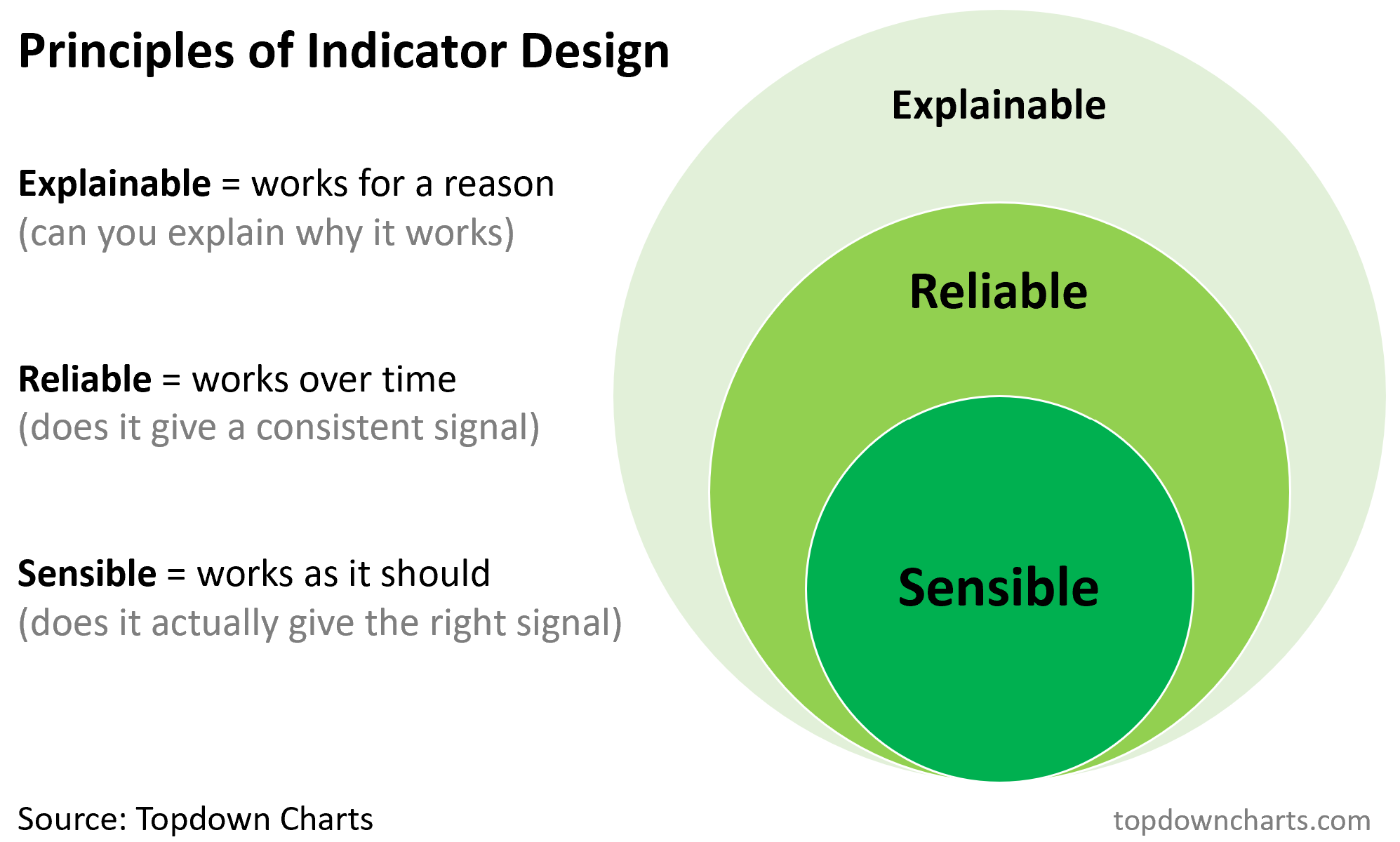
10. How Valuations Fit into the Bigger Picture: To close out, while valuations can be incredibly useful in flagging moments of major risk vs opportunity, I personally only consider them to be one piece of the puzzle (albeit a very important piece). From my perspective, if you think of it as building a puzzle, you typically need more than one piece to figure out the picture, and for most puzzles, you need many pieces.
I recommend starting with valuations but building out the picture with information about cycles (earnings/fundamentals/macro), monetary (financial conditions, liquidity), and tactical information (technical analysis, sentiment and positioning). This helps raise conviction at moments when it might feel hard to do the right thing, and helps keep you on track through the range in the long periods between valuation extremes.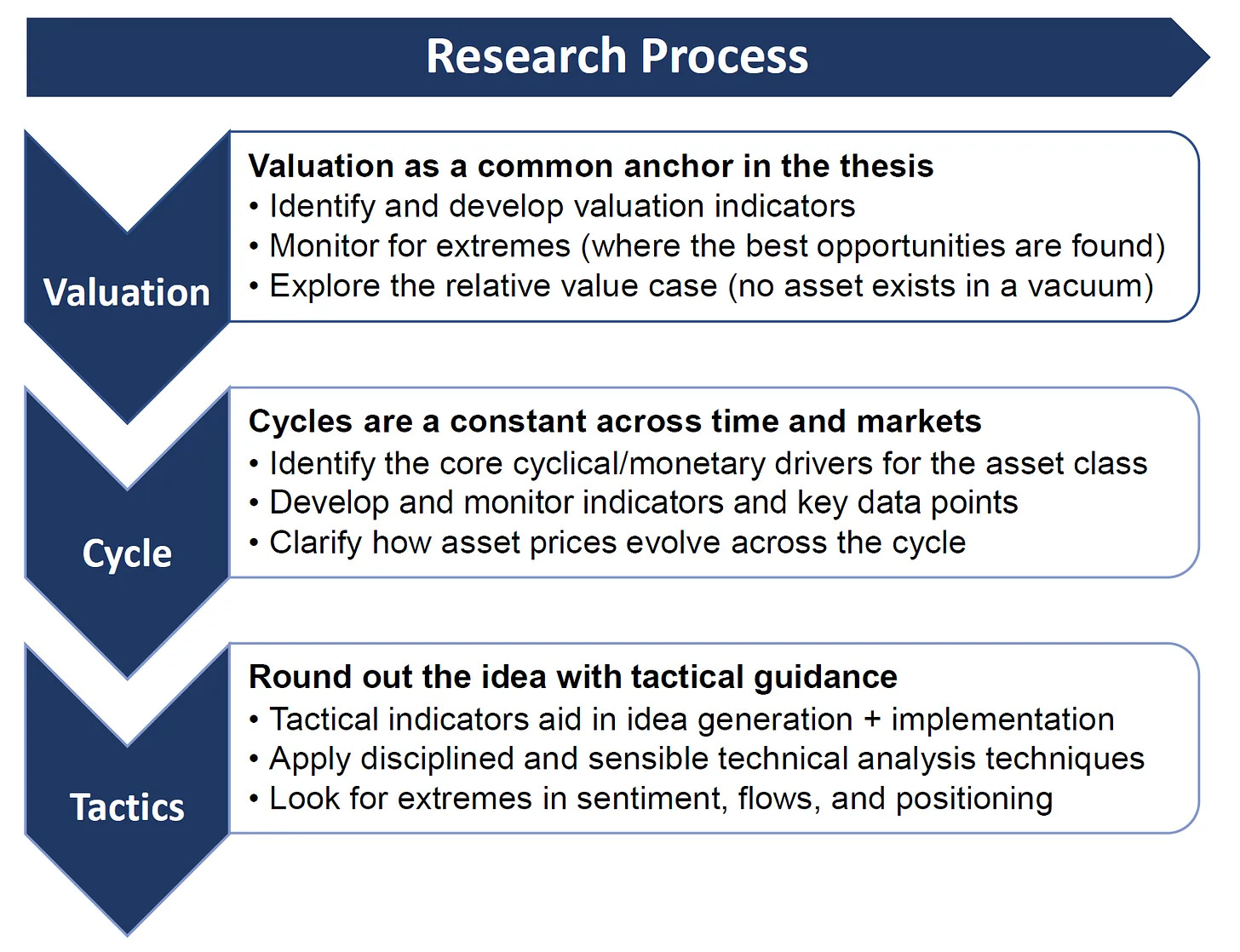
Source: Using Valuations to Navigate the Cycle Topdown Charts Professional








